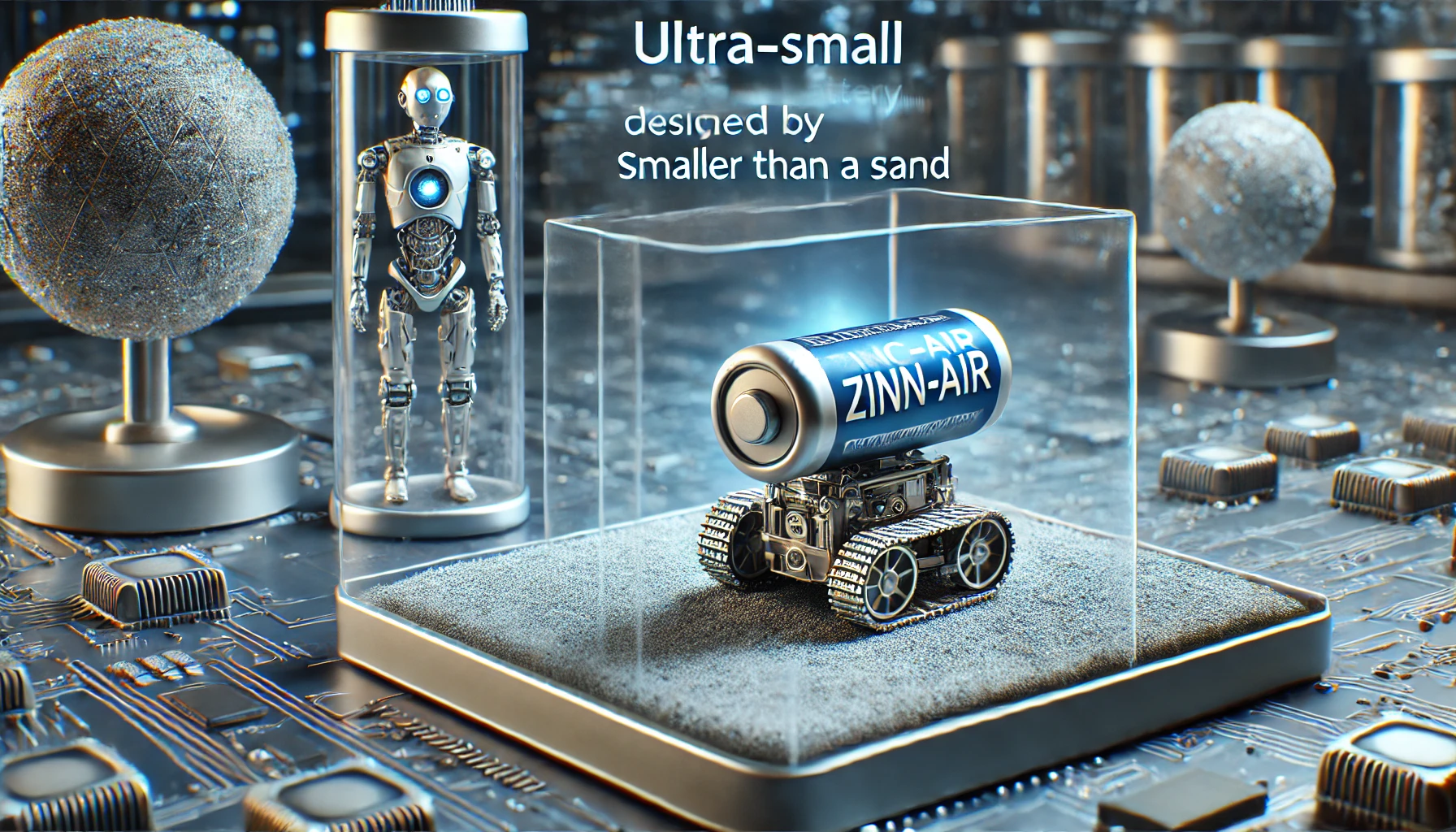August 18, 2024 – Engineers at MIT have developed an incredibly small battery that could revolutionize the field of micro-robotics. The new zinc-air battery, which is smaller than a grain of sand, could enable the deployment of cell-sized autonomous robots capable of performing a wide range of tasks, from delivering drugs within the human body to detecting leaks in industrial pipelines.
The battery, which measures just 0.1 millimeters in length and 0.002 millimeters in thickness, operates by capturing oxygen from the air to oxidize zinc, generating a current of up to 1 volt. This is enough to power small circuits, sensors, or even actuators, allowing these tiny robots to sense and respond to their environment.
“We believe this advancement will be a game-changer for the field of robotics,” said Michael Strano, the Carbon P. Dubbs Professor of Chemical Engineering at MIT and the senior author of the study. “Our goal is to integrate robotic functions directly into the battery, creating fully autonomous devices that can operate independently in various environments.”
The development of these minuscule batteries addresses a significant challenge in the field of micro-robotics: the need for a reliable and autonomous power source. While previous efforts have focused on powering microscale devices using solar energy, this approach requires an external light source, limiting the robots’ mobility and autonomy. The introduction of a built-in battery eliminates this dependency, enabling the robots to operate in confined spaces without the need for external power.
Strano’s team chose to use a zinc-air battery for this purpose due to its high energy density and longevity. Zinc-air batteries are commonly found in hearing aids, where they provide a long-lasting power source in a compact form. The MIT researchers adapted this technology to create a battery that could power the essential functions of a tiny robot.
The battery is composed of a zinc electrode connected to a platinum electrode, all embedded in a strip of SU-8, a polymer widely used in microelectronics. When exposed to oxygen, the zinc oxidizes, releasing electrons that flow to the platinum electrode, generating electricity. This process is efficient enough to power various robotic components, including an actuator that can raise and lower a robotic arm, as well as sensors that detect environmental chemicals.
The potential applications of these tiny batteries are vast. One of the most promising uses is in medical robotics, where cell-sized robots could be injected into the human body to deliver targeted therapies, such as insulin. Once their task is complete, these biocompatible robots could safely break down and be absorbed by the body.
The MIT team is also working on increasing the battery’s voltage, which would expand its potential applications even further. Higher voltage could enable more complex robotic functions, opening the door to new possibilities in fields such as manufacturing, agriculture, and environmental monitoring.
“We’re just beginning to explore the potential of this technology,” Strano said. “Our next step is to integrate the battery directly into the robot, creating a fully autonomous device that can perform complex tasks in challenging environments.”
This groundbreaking research, which was published in the journal Science Robotics, has been recognized as a finalist for the Best Paper Award on Multi-Robot Systems at the IEEE International Conference on Robotics and Automation 2024. The study was funded by the U.S. Army Research Office, the U.S. Department of Energy, the National Science Foundation, and a MathWorks Engineering Fellowship.
As the research progresses, the potential for tiny, battery-powered robots continues to grow, offering promising new solutions to some of the world’s most pressing challenges. Whether it’s delivering life-saving drugs directly to a targeted site in the body or inspecting and repairing critical infrastructure, these tiny robots could play a crucial role in the future of technology.
